
1.3 Summarize the types of cables and connectors and explain which is the appropriate type for a solution
Copper - Objective
There are two types of network cables, what are the names of the two?
Copper and Fiber
What type of copper wiring is most commonly used in networking?
Unshielded Twisted Pair (UTP).
Unshielded Twisted Pair (UTP) - Objective
is a standard ethernet cable that contains eight wires, twisted into four pairs
Why are unshielded twisted pair (utp) wires twisted?
to cancel out most forms of electromagnetic interference
How far can Unshielded Twisted Pair (UTP) run?
Up to 100 meters
Concept of Grounding
Imagine you have an electrical device, like a TV or a computer. Inside, electricity is flowing through wires to make everything work. Now, sometimes, there can be extra or unwanted electricity, like a buildup of static or interference from other electrical devices. This extra electricity can cause problems, like interference or even damage to the device.
Grounding is a way to safely get rid of this extra electricity. It's like having a safe exit route for the electricity to leave the device and go into the ground (literally into the earth), where it can’t cause any harm.
Shielded Twisted Pair (STP) - Objective
is a standard ethernet cable that contains eight wires, twisted into four pairs and it also contains foil around the wires
What is the foil used for in Shielded Twisted Pair (STP) ?
acts as a shield to block out unwanted electrical interference
STP cable is used in what?
Applications such as video transmissions and in areas where there is a large amount of interference.
If we went crazy, we could buy a cable that had a separate shield around every pair. The shield protects the wires from electromagnetic interference. It also protects individual wire pairs from crosstalk (interference from a neighboring wire pair).
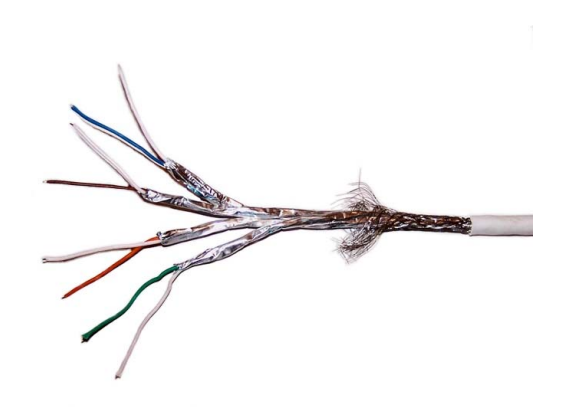
Coaxial/RG-6
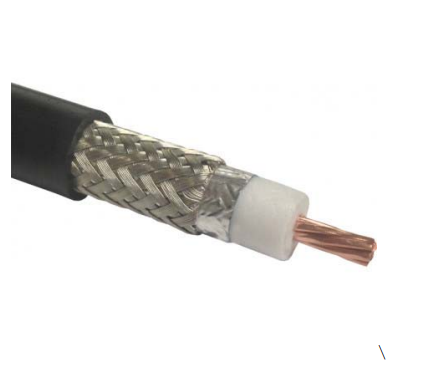
What is a Coaxial cable?
A form of copper wiring
How far can coaxial wiring be run?
500 meters
What does a coaxial cable consist of?
A central conductor with a braid wrapped around it
What does the braid do?
Shields the central conductor from electromagnetic interference that could disrupt the signal
What systems media uses coaxial cables?
Older analog cameras, satellite systems, antennas, and cable modems
FIBER
Fiber optic cables
Is fiber optic cables better than copper cables?
Yes, and they can be run on longer distances that coppes
What does fiber uses to transmit data from one side to another?
Uses light to transmit data
Fiber comes in two forms:
1) Single mode
2) Multimode
Single mode
can be run upwards of 200 km.
how does the light travel in single mode?
light travels down the center of the cable as a single signal
Multimode
can run up to 1 km
how does the light travel in multi-mode?
the light bounces up and down inside the cable
A single copper cable contains eight wires . When connected, the copper cable carries data in multiple directions.
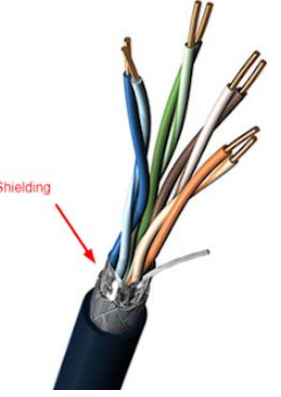
A single fiber optic cable can contain multiple strands. A single strand carries data in only one direction. When we peel back the fiber optic cable, we find multiple strands, which can be color coded.
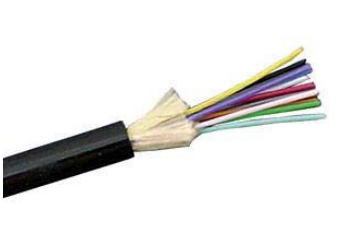
Cat 5 - Objective
an older system for ethernet
pretty much not in use (obsolete)
cat 5 supported speeds
1000 MBITS
cat 5 maximum length
100 meters
Cat 5e - Objective
IMPORTANT FACTS: THE SAME SPECIFICATIONS! THE ONLY DIFFERENCE IS IT IS THE CURRENT ETHERNET STANDARD
Cat 5e
Is the current ethernet standard
Cat 5e supports speeds of up to
1000 Mbits
Cat 5e maximum length
is 100 meters
Cat 6 - Objective
Cat 6
is another current ethernet standard
Cat 6 supports speeds up to
1000 Mbits
Cat 6 maximum length
100 meters
How is Cat 6 different from Cat 5e?
It is more expensive and has less noise and interference
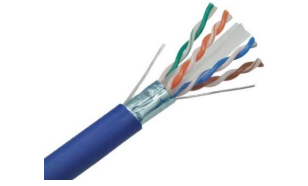
KEY FACTS: CAT 5 - CAT 6 has the same speeds and maximum lengths 🔑
Cat 6a - Objective
Cat 6a
is a new ethernet standard
Cat 6A supports speeds of up to
10 GBITS
Cat 6A maximum length
100 meters
Cat 7 - Objective
was never adopted
was replaced by Cat 6A
not recognized
Cat 8 - Objective
Cat 8 ethernet standard is
still under development
Cat 8 maximum length
30 meters
Cat 8 supports speeds of up to
40 GBITS
RG-6
What is RG-6 used for?
is used for satellite systems and surveillance cameras.
Twinaxial - Objective
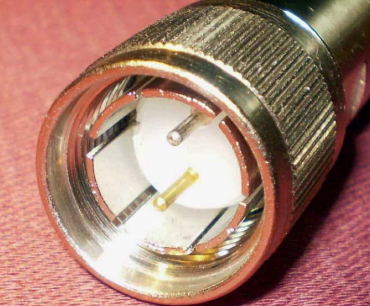
What is a twinaxial cable?
a coaxial cable with two internal conductors
What are the supports speeds of twinaxial?
10GB or 40GB Ethernet
What is the maximum length of twinaxial cables?
10 Meters
What type of connection is commonly used in data centers for high bandwidth and low latency between servers, switches, and storage appliances?
Twinaxial
568A - 568B - Objective
What are the two methods for terminating a CAT5e/Cat6/Cat6A cable?
568A and 568B
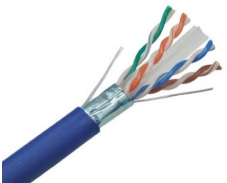
Remember:
The ethernet cables contains 4 pairs of wires (colored as blue, orange, green, and brown).
What is the difference between 568A and 568B ?
The position of the orange and green wires is swapped
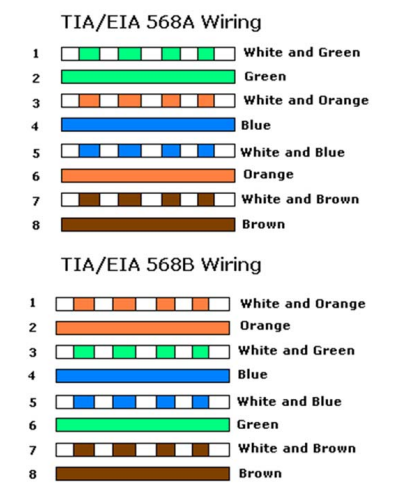
IMPORTANT FACT: Most organizations prefer 568B, and Most governments prefer 568A
If we terminate the cable in the same order on both ends, we call it a straight through cable. If we terminate the cable as 568A on one end and 568B on the other end, the orange and green pairs become crossed. This is called a crossover cable.

Connector Types
RJ-11 - Objective

What type of connector is used for analog phone lines?
RJ-11
How many pins does an RJ-11 connector contain, and how many pins wide is it?’
Contains 4 pins but is 6 pins wide
RJ-45 - Objective
What type of connector is used for Ethernet connections with UTP or STP cables?
RJ-45
How many pins does RJ-45 connectors contain?
8 pins
F-TYPE CONNECTOR - Objective
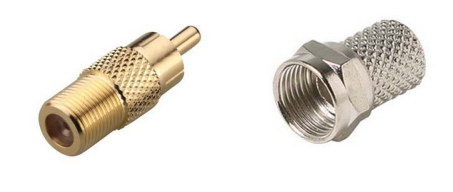
What type of connector is used to terminate a coaxial cable?
F Connector
The male F connector screws on to lock to a female connector.
Local Connector - Objective
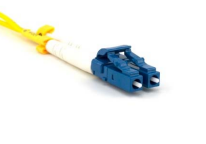
What is a Local Connector?
a type of fiber optic connector commonly used for in network equipment
What is LC often used in?
Small Form Factor Pluggable (SFP)
Straight Tip (ST) - Objective
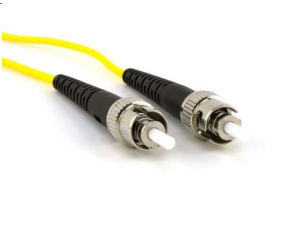
What is a Straight Tip (ST)?
a type of fiber optic connector
Straight Tip (ST) are commonly used in what type of settings?
Telecommunications companies for fiber distribution
Subscriber Connector (SC) - Objective
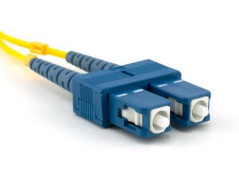
What is a Subscriber Connector?
is a type of fiber optic connector
Where are Subscriber Connectors (SC) widely used?
In network equipment, fiber optic patch panels, and fiber optic patch cords.
Mechanical Transfer (MT) connector - Objective
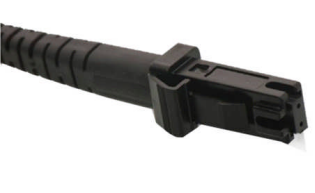
Is a type of fiber optic connector
Where is MT connectors commonly used?
Multi-mode fiber optic applications
In which environments are MT-RJ connectors commonly used due to their space-saving and high-density fiber connection capabilities?
Data centers, telecommunications, and networking environments.
Density meaning:
Refers to the ability to pack a large number of fiber optic fibers into a single connector or within a small physical space
Ultra-Physical Contact (UPC) - Objective

Connectors that leave just the fiber portion at the tip of the connector. The connectors are very polished. The main goal of polishing the connectors to such a fine degree was to reduce back reflection.
Bad things about UPC
Each time we remove an reinsert the connector, it wears a little bit, which scratches its surface over time and this causes light to come back to the source point
Back Reflection Explained: When light travels through a fiber optic cable, it’s meant to move in one direction—from the source (like a transmitter) to the destination (like a receiver). However, some of this light can bounce back towards the source instead of continuing through the fiber. This bouncing back of light is called back reflection.
Angled Physical Contact (APC) - Objective
connector is polished at an angle of 8 degrees
Does APC have any back reflection?
This connector does not have any back reflection. Even after repeated connections and disconnections
The APC polished angle is used specifically with which other connectors?
Straight Tip (ST)
Small Form Factor (SFP) Pluggable Transceiver
What is an SFP?
are vacant slots on switches or routers designed to accept different types of SFP modules. Here’s a breakdown:
SFP Ports: These are special slots on networking devices like switches and routers.
SFP Modules: These are interchangeable components that you plug into the SFP ports. They come in various types, such as:
Ethernet SFPs: For connecting devices using standard Ethernet cables.
Fiber Optic SFPs: For connecting devices using fiber optic cables.
SFPs are swappable
You cant plug a cable into an SFP port !
Why you ask?
Because there are many types of cables and available speeds - copper, single mode fiber, multi mode fiber, 10GBit speeds, 1 GBit speeds, etc. The manufacture of the switch can’t sell a different type of switch for every possible connector.
Why cant they?
It would result in too many switch combinations. So instead the manufacture adds some “SFP” ports
Maximum speed of SFP is
1 GBITs
Enhanced Form-Factor Pluggable (SFP+) - Objective
What does SFP+ work with?
An SFP+ works with fiber and copper connectors
Maximum speeds of SFP+
10 Gbits
Quad Small Form-Factor Pluggable (QFSP) - Objective
Where is QFSP used?
Places that are required in the networks of major Internet Service Providers,
Maximum speed of QSFP:
4 Gbits
Enhanced Quad Small Form-Factor Pluggable (QFSP)+ - Objective
Maximum speed of QFSP:
40 GBits
Patch Panel - Objective
What is used as a common termination point for an ethernet cable
A patch panel
What is the purpose of a patch panel?
to reduce clutter by keeping your network cables neat and organized
A patch panel is similar to a keystone or wall jack (picture below)
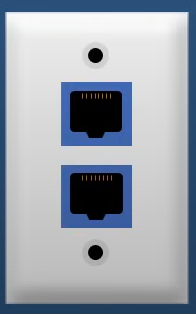
How does a patch panel work?
The cable is run underground to the nearest networking device (PC). The RJ45 connector is removed so only the wiring remains it will look like this (picture below)

The computer then plugs an ethernet cord into the front end which gives it access to the network (Wi-Fi)
Where does the patch panel come in ?
On the back of the patch panel, the RJ45 connectors are removed, and the wires are punched down, so it will look something like this (view picture below)
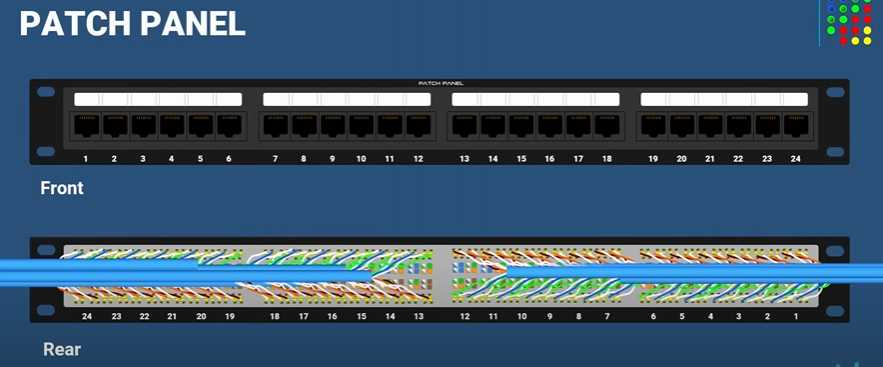
The front of the patch panel will then be used to for shorter ethernet cables
to connect to the switch so it can be easily manageable
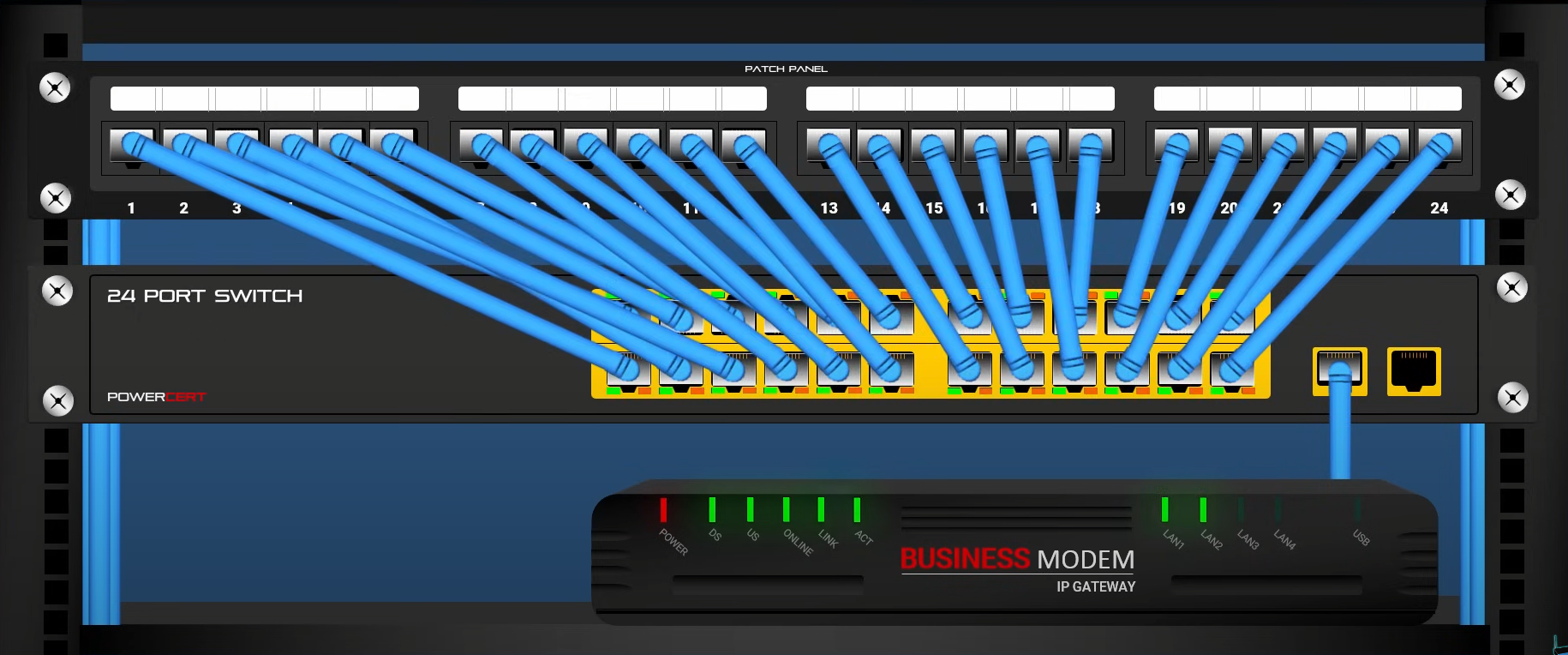
What is a Patch Panel? (cable management) (youtube.com)
Fiber Distribution Panel - Objective
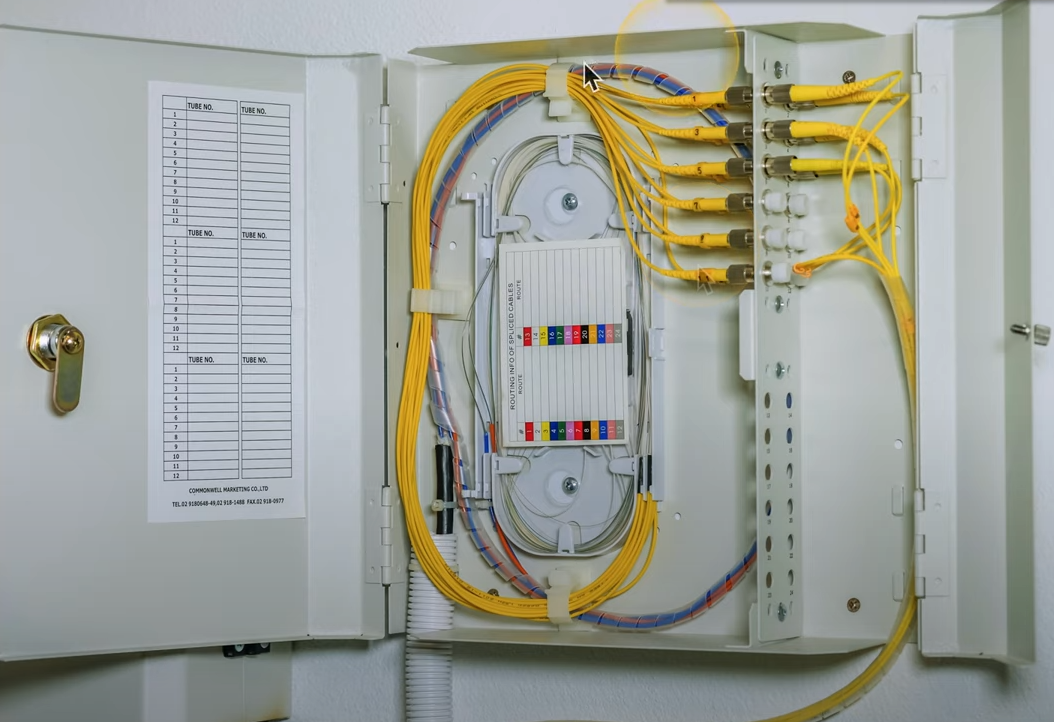
We can only terminate a fiber to a male end - IMPORTANT
Why Only Male Ends? When you terminate a fiber optic cable, you usually end it with a male connector. The reason for this is that most of the equipment (like patch panels, switches, or devices) you connect to will have female connectors, which are designed to accept the male connector from your terminated fiber.
crucial components in managing and organizing fiber optic cables in a network
used to terminate fiber cables
Has a patch panel at both ends
Fiber bend radius
breaks when bent too tightly
66 Block - Objective
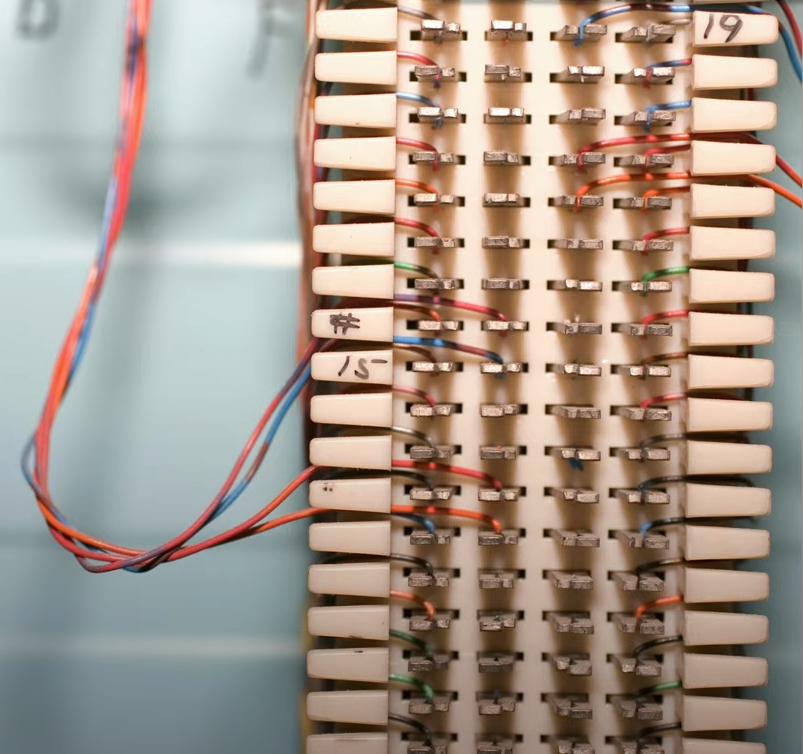
What is a 66 Block?
A patch panel for analog voice communication/ telecommunication
Where are blocks positioned in 66 block patch panels?
Wires coming from outside the system (wiring coming from a phone system or wiring coming from outside the building) are normally punched down to the left side of the panel. Building wiring is punched down to the right side.
The left side of the 66 block is typically used for connecting wires that come from an external source, such as a telephone company’s line or an external network.
The right side of the 66 block is usually for connecting wires that go to internal devices within the building, like phones, network jacks, or other equipment.
Generally replaced by 110 blocks
110 block - Objective
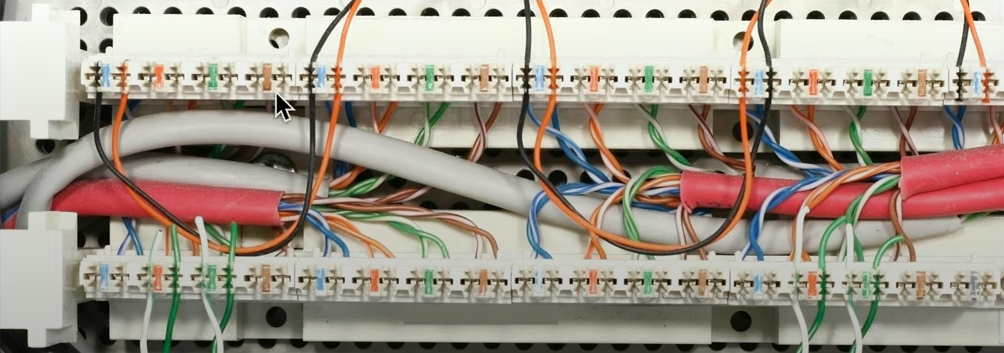
A newer patch panel for analog voice communication and digital communication
replaces the 66 block
What cables are used in 110 block patch panels ?
Category 5 and Category 6 cables
Krone Block
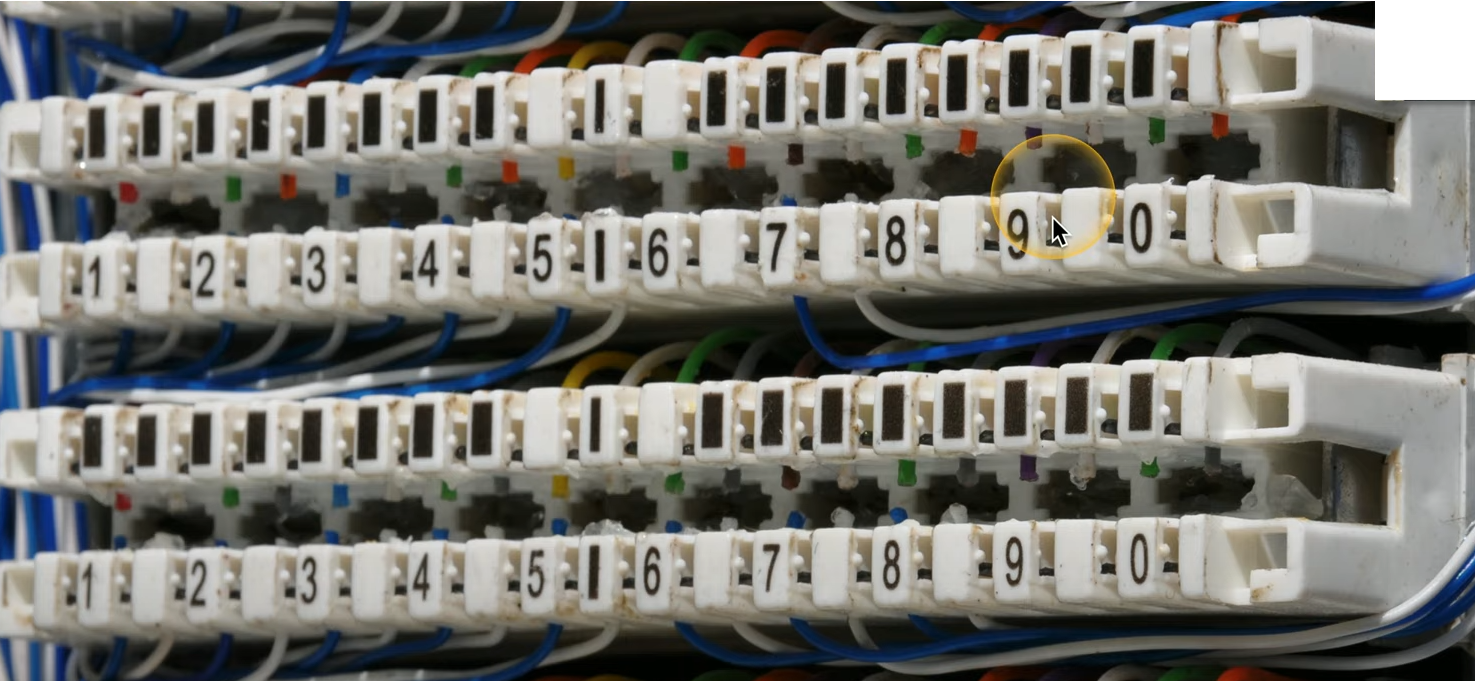
is used for terminating and connecting wires in both analog and digital communication systems.
It supports a variety of communication types, including voice, data, and network signals.
Basic Functions are Similar to 66 Block or 110 Block
Widely used in Europe
BIX (Building Industry Cross-connect) Block
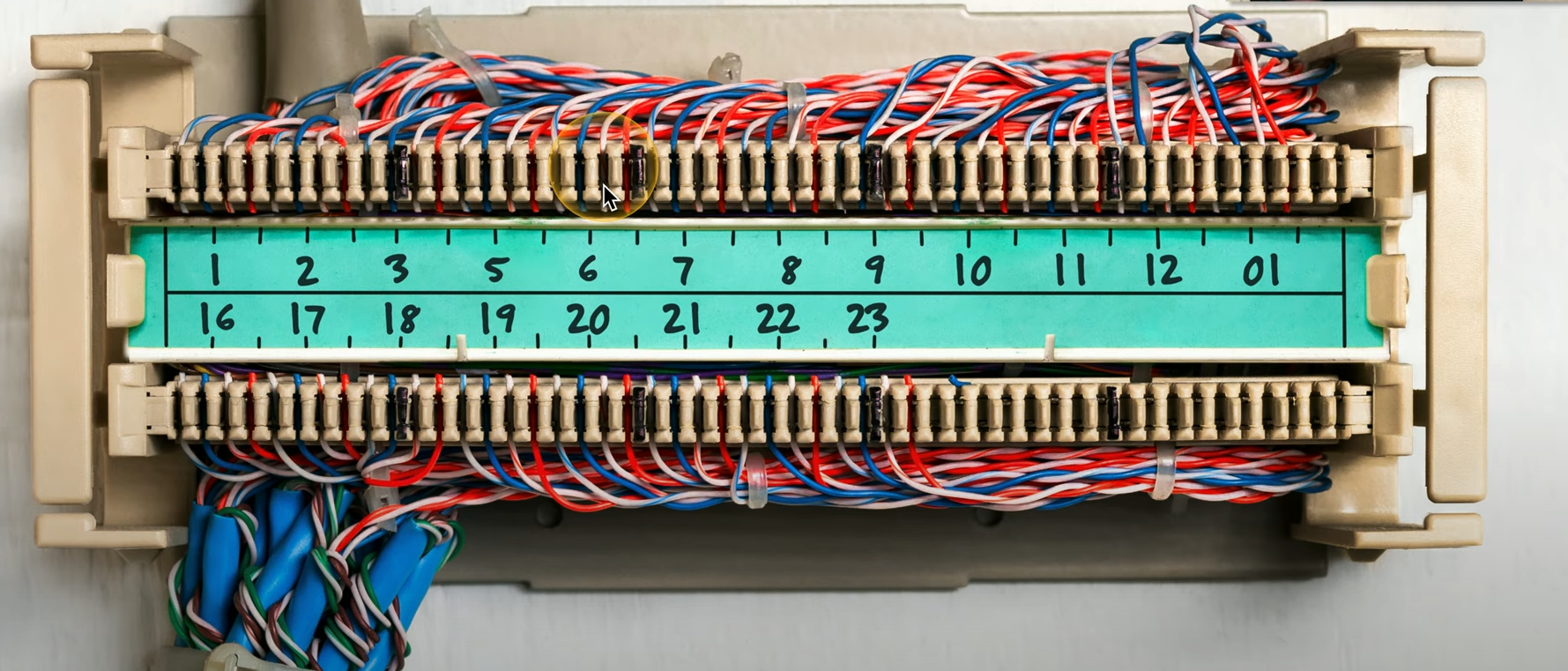
Support category 6 cable standard
Similar to the other blocks
Ethernet Standards
Full Duplex
both devices can transmit and listen at the same time
10BASE-T - Objective
10BASE-T was the original copper standard
Transfer speeds:
up to 10MBITS
Used Cat3 cables - deprecated old
100BASE-TX / 100BaseT- Objective
Transfer speeds:
up to 100 Mbits
Used Cat5 cables
can be half either half duplex or full duplex
1000BASE-T - Objective
Known as: Gigabit Ethernet
1000BASE-T is the
current ethernet standard
This type of connection must always be full duplex
10GBASE-T - Objective
Operates at 10 GBIT/S
Cables that are used in 10GBASE-T :
Cat6A and Cat6 cables
40GBASE-T - Objective
Operates at speeds of 40 Gbit/s over cat 8.
FIBER
100BASE-FX - Objective
Provided speeds of up to 100 MBIT/S
Distance:
Was used for longer distances and used expensive lasers
100BASE-SX - Objective
Provided speeds up to 100 MBIT/S
Distance:
Used for shorter distances and used cheaper LEDS
THE ONLY DIFERENCE BETWEEN 100BASE-FX AND 100BASE-SX was cost and distance - the speeds were the same
1000BASE-X - Objective
is a standard for communication over fiber at 1GBit/s.
has 2 main standards
1000BASE LX and 1000BASE SX
1000BASE-LX - Objective
uses single mode fiber
Distances:
up to 10km
1000BASE-SX - Objective
uses multi-mode fiber
Distances:
up to 220 meters
10GBase-S = multi-mode fiber
10GBase-L = single mode fiber
10GBASE-SR - Objective
provides speeds of up to 10GBit/s
Distance:
up to 26m
10GBASE-LR - Objective
provides speeds up to 10GBit/s
Distance:
up to 10km
Methods of transmitting multiple optical signals over a single fiber optic strand
The main difference between these technologies seems to lie in how the wavelengths of the signals are managed
Why do you think the separation of wavelengths is important?
Imagine each wavelength as a different color. If these “colors” are too close together, they might mix and cause interference, making it hard to separate them later.
Coarse Wavelength Division Multiplexing (CWDM) - Objective
Is like using very different colors, like red and blue. Because the colors (wavelengths) are very distinct, it’s easier to keep the signals separate, even if the system isn’t perfectly precise
DWDM (Dense Wavelength Division Multiplexing) - Objective
Is like using colors that are very close to each other, like two shades of green. Because the wavelengths are so close, you can fit more signals into the same fiber, but you need to be much more precise, or the signals might mix up.
IMPORTANT FACT USE THIS TO UNDERSTAND DWDM AND CWDM
With CWDM, the "colors" (or wavelengths) are spaced out more, making it easier to keep the signals separate, but you can't fit as many signals on the same fiber. It's simpler but less dense.
With DWDM, the wavelengths are much closer together, allowing you to pack more signals into the same fiber, which means you can handle more data. However, because the wavelengths are so close, the system has to be very precise to avoid mixing the signals up.
Bidirectional Wavelength Division Multiplexing (WDM) - Objective
voices are like wavelengths of light
by using different wavelengths for signals going in opposite directions, the system prevents them from interfering with each other. If they used the same wavelength, the signals could mix and get confused
What does Bidirectional WDM allow?
us to send a signal on a single fiber optic strand in both directions at the same time. This can happen because the signal in one direction has a different wavelength than the signal in the opposite direction
Below is a great wording on how to understand Bidirectional WDM:
Imagine you have two people trying to talk to each other through the same tube at the same time. If they both speak in the same voice, their words might mix, making it hard to understand anything. But if one person speaks in a high voice and the other in a low voice, it becomes easier to tell them apart.
Copper - Objective
There are two types of network cables, what are the names of the two?
Copper and Fiber
What type of copper wiring is most commonly used in networking?
Unshielded Twisted Pair (UTP).
Unshielded Twisted Pair (UTP) - Objective
is a standard ethernet cable that contains eight wires, twisted into four pairs
Why are unshielded twisted pair (utp) wires twisted?
to cancel out most forms of electromagnetic interference
How far can Unshielded Twisted Pair (UTP) run?
Up to 100 meters
Concept of Grounding
Imagine you have an electrical device, like a TV or a computer. Inside, electricity is flowing through wires to make everything work. Now, sometimes, there can be extra or unwanted electricity, like a buildup of static or interference from other electrical devices. This extra electricity can cause problems, like interference or even damage to the device.
Grounding is a way to safely get rid of this extra electricity. It's like having a safe exit route for the electricity to leave the device and go into the ground (literally into the earth), where it can’t cause any harm.
Shielded Twisted Pair (STP) - Objective
is a standard ethernet cable that contains eight wires, twisted into four pairs and it also contains foil around the wires
What is the foil used for in Shielded Twisted Pair (STP) ?
acts as a shield to block out unwanted electrical interference
STP cable is used in what?
Applications such as video transmissions and in areas where there is a large amount of interference.
If we went crazy, we could buy a cable that had a separate shield around every pair. The shield protects the wires from electromagnetic interference. It also protects individual wire pairs from crosstalk (interference from a neighboring wire pair).

Coaxial/RG-6

What is a Coaxial cable?
A form of copper wiring
How far can coaxial wiring be run?
500 meters
What does a coaxial cable consist of?
A central conductor with a braid wrapped around it
What does the braid do?
Shields the central conductor from electromagnetic interference that could disrupt the signal
What systems media uses coaxial cables?
Older analog cameras, satellite systems, antennas, and cable modems
FIBER
Fiber optic cables
Is fiber optic cables better than copper cables?
Yes, and they can be run on longer distances that coppes
What does fiber uses to transmit data from one side to another?
Uses light to transmit data
Fiber comes in two forms:
1) Single mode
2) Multimode
Single mode
can be run upwards of 200 km.
how does the light travel in single mode?
light travels down the center of the cable as a single signal
Multimode
can run up to 1 km
how does the light travel in multi-mode?
the light bounces up and down inside the cable
A single copper cable contains eight wires . When connected, the copper cable carries data in multiple directions.

A single fiber optic cable can contain multiple strands. A single strand carries data in only one direction. When we peel back the fiber optic cable, we find multiple strands, which can be color coded.

Cat 5 - Objective
an older system for ethernet
pretty much not in use (obsolete)
cat 5 supported speeds
1000 MBITS
cat 5 maximum length
100 meters
Cat 5e - Objective
IMPORTANT FACTS: THE SAME SPECIFICATIONS! THE ONLY DIFFERENCE IS IT IS THE CURRENT ETHERNET STANDARD
Cat 5e
Is the current ethernet standard
Cat 5e supports speeds of up to
1000 Mbits
Cat 5e maximum length
is 100 meters
Cat 6 - Objective
Cat 6
is another current ethernet standard
Cat 6 supports speeds up to
1000 Mbits
Cat 6 maximum length
100 meters
How is Cat 6 different from Cat 5e?
It is more expensive and has less noise and interference

KEY FACTS: CAT 5 - CAT 6 has the same speeds and maximum lengths 🔑
Cat 6a - Objective
Cat 6a
is a new ethernet standard
Cat 6A supports speeds of up to
10 GBITS
Cat 6A maximum length
100 meters
Cat 7 - Objective
was never adopted
was replaced by Cat 6A
not recognized
Cat 8 - Objective
Cat 8 ethernet standard is
still under development
Cat 8 maximum length
30 meters
Cat 8 supports speeds of up to
40 GBITS
RG-6
What is RG-6 used for?
is used for satellite systems and surveillance cameras.
Twinaxial - Objective

What is a twinaxial cable?
a coaxial cable with two internal conductors
What are the supports speeds of twinaxial?
10GB or 40GB Ethernet
What is the maximum length of twinaxial cables?
10 Meters
What type of connection is commonly used in data centers for high bandwidth and low latency between servers, switches, and storage appliances?
Twinaxial
568A - 568B - Objective
What are the two methods for terminating a CAT5e/Cat6/Cat6A cable?
568A and 568B

Remember:
The ethernet cables contains 4 pairs of wires (colored as blue, orange, green, and brown).
What is the difference between 568A and 568B ?
The position of the orange and green wires is swapped

IMPORTANT FACT: Most organizations prefer 568B, and Most governments prefer 568A
If we terminate the cable in the same order on both ends, we call it a straight through cable. If we terminate the cable as 568A on one end and 568B on the other end, the orange and green pairs become crossed. This is called a crossover cable.

Connector Types
RJ-11 - Objective

What type of connector is used for analog phone lines?
RJ-11
How many pins does an RJ-11 connector contain, and how many pins wide is it?’
Contains 4 pins but is 6 pins wide
RJ-45 - Objective
What type of connector is used for Ethernet connections with UTP or STP cables?
RJ-45
How many pins does RJ-45 connectors contain?
8 pins
F-TYPE CONNECTOR - Objective

What type of connector is used to terminate a coaxial cable?
F Connector
The male F connector screws on to lock to a female connector.
Local Connector - Objective

What is a Local Connector?
a type of fiber optic connector commonly used for in network equipment
What is LC often used in?
Small Form Factor Pluggable (SFP)
Straight Tip (ST) - Objective

What is a Straight Tip (ST)?
a type of fiber optic connector
Straight Tip (ST) are commonly used in what type of settings?
Telecommunications companies for fiber distribution
Subscriber Connector (SC) - Objective

What is a Subscriber Connector?
is a type of fiber optic connector
Where are Subscriber Connectors (SC) widely used?
In network equipment, fiber optic patch panels, and fiber optic patch cords.
Mechanical Transfer (MT) connector - Objective

Is a type of fiber optic connector
Where is MT connectors commonly used?
Multi-mode fiber optic applications
In which environments are MT-RJ connectors commonly used due to their space-saving and high-density fiber connection capabilities?
Data centers, telecommunications, and networking environments.
Density meaning:
Refers to the ability to pack a large number of fiber optic fibers into a single connector or within a small physical space
Ultra-Physical Contact (UPC) - Objective

Connectors that leave just the fiber portion at the tip of the connector. The connectors are very polished. The main goal of polishing the connectors to such a fine degree was to reduce back reflection.
Bad things about UPC
Each time we remove an reinsert the connector, it wears a little bit, which scratches its surface over time and this causes light to come back to the source point
Back Reflection Explained: When light travels through a fiber optic cable, it’s meant to move in one direction—from the source (like a transmitter) to the destination (like a receiver). However, some of this light can bounce back towards the source instead of continuing through the fiber. This bouncing back of light is called back reflection.
Angled Physical Contact (APC) - Objective
connector is polished at an angle of 8 degrees
Does APC have any back reflection?
This connector does not have any back reflection. Even after repeated connections and disconnections
The APC polished angle is used specifically with which other connectors?
Straight Tip (ST)
Small Form Factor (SFP) Pluggable Transceiver
What is an SFP?
are vacant slots on switches or routers designed to accept different types of SFP modules. Here’s a breakdown:
SFP Ports: These are special slots on networking devices like switches and routers.
SFP Modules: These are interchangeable components that you plug into the SFP ports. They come in various types, such as:
Ethernet SFPs: For connecting devices using standard Ethernet cables.
Fiber Optic SFPs: For connecting devices using fiber optic cables.
SFPs are swappable
You cant plug a cable into an SFP port !
Why you ask?
Because there are many types of cables and available speeds - copper, single mode fiber, multi mode fiber, 10GBit speeds, 1 GBit speeds, etc. The manufacture of the switch can’t sell a different type of switch for every possible connector.
Why cant they?
It would result in too many switch combinations. So instead the manufacture adds some “SFP” ports
Maximum speed of SFP is
1 GBITs
Enhanced Form-Factor Pluggable (SFP+) - Objective
What does SFP+ work with?
An SFP+ works with fiber and copper connectors
Maximum speeds of SFP+
10 Gbits
Quad Small Form-Factor Pluggable (QFSP) - Objective
Where is QFSP used?
Places that are required in the networks of major Internet Service Providers,
Maximum speed of QSFP:
4 Gbits
Enhanced Quad Small Form-Factor Pluggable (QFSP)+ - Objective
Maximum speed of QFSP:
40 GBits
Patch Panel - Objective
What is used as a common termination point for an ethernet cable
A patch panel
What is the purpose of a patch panel?
to reduce clutter by keeping your network cables neat and organized
A patch panel is similar to a keystone or wall jack (picture below)

How does a patch panel work?
The cable is run underground to the nearest networking device (PC). The RJ45 connector is removed so only the wiring remains it will look like this (picture below)

The computer then plugs an ethernet cord into the front end which gives it access to the network (Wi-Fi)
Where does the patch panel come in ?
On the back of the patch panel, the RJ45 connectors are removed, and the wires are punched down, so it will look something like this (view picture below)

The front of the patch panel will then be used to for shorter ethernet cables
to connect to the switch so it can be easily manageable

What is a Patch Panel? (cable management) (youtube.com)
Fiber Distribution Panel - Objective

We can only terminate a fiber to a male end - IMPORTANT
Why Only Male Ends? When you terminate a fiber optic cable, you usually end it with a male connector. The reason for this is that most of the equipment (like patch panels, switches, or devices) you connect to will have female connectors, which are designed to accept the male connector from your terminated fiber.
crucial components in managing and organizing fiber optic cables in a network
used to terminate fiber cables
Has a patch panel at both ends
Fiber bend radius
breaks when bent too tightly
66 Block - Objective

What is a 66 Block?
A patch panel for analog voice communication/ telecommunication
Where are blocks positioned in 66 block patch panels?
Wires coming from outside the system (wiring coming from a phone system or wiring coming from outside the building) are normally punched down to the left side of the panel. Building wiring is punched down to the right side.
The left side of the 66 block is typically used for connecting wires that come from an external source, such as a telephone company’s line or an external network.
The right side of the 66 block is usually for connecting wires that go to internal devices within the building, like phones, network jacks, or other equipment.
Generally replaced by 110 blocks
110 block - Objective

A newer patch panel for analog voice communication and digital communication
replaces the 66 block
What cables are used in 110 block patch panels ?
Category 5 and Category 6 cables
Krone Block

is used for terminating and connecting wires in both analog and digital communication systems.
It supports a variety of communication types, including voice, data, and network signals.
Basic Functions are Similar to 66 Block or 110 Block
Widely used in Europe
BIX (Building Industry Cross-connect) Block

Support category 6 cable standard
Similar to the other blocks
Ethernet Standards
Full Duplex
both devices can transmit and listen at the same time
10BASE-T - Objective
10BASE-T was the original copper standard
Transfer speeds:
up to 10MBITS
Used Cat3 cables - deprecated old
100BASE-TX / 100BaseT- Objective
Transfer speeds:
up to 100 Mbits
Used Cat5 cables
can be half either half duplex or full duplex
1000BASE-T - Objective
Known as: Gigabit Ethernet
1000BASE-T is the
current ethernet standard
This type of connection must always be full duplex
10GBASE-T - Objective
Operates at 10 GBIT/S
Cables that are used in 10GBASE-T :
Cat6A and Cat6 cables
40GBASE-T - Objective
Operates at speeds of 40 Gbit/s over cat 8.
FIBER
100BASE-FX - Objective
Provided speeds of up to 100 MBIT/S
Distance:
Was used for longer distances and used expensive lasers
100BASE-SX - Objective
Provided speeds up to 100 MBIT/S
Distance:
Used for shorter distances and used cheaper LEDS
THE ONLY DIFERENCE BETWEEN 100BASE-FX AND 100BASE-SX was cost and distance - the speeds were the same
1000BASE-X - Objective
is a standard for communication over fiber at 1GBit/s.
has 2 main standards
1000BASE LX and 1000BASE SX
1000BASE-LX - Objective
uses single mode fiber
Distances:
up to 10km
1000BASE-SX - Objective
uses multi-mode fiber
Distances:
up to 220 meters
10GBase-S = multi-mode fiber
10GBase-L = single mode fiber
10GBASE-SR - Objective
provides speeds of up to 10GBit/s
Distance:
up to 26m
10GBASE-LR - Objective
provides speeds up to 10GBit/s
Distance:
up to 10km
Methods of transmitting multiple optical signals over a single fiber optic strand
The main difference between these technologies seems to lie in how the wavelengths of the signals are managed
Why do you think the separation of wavelengths is important?
Imagine each wavelength as a different color. If these “colors” are too close together, they might mix and cause interference, making it hard to separate them later.
Coarse Wavelength Division Multiplexing (CWDM) - Objective
Is like using very different colors, like red and blue. Because the colors (wavelengths) are very distinct, it’s easier to keep the signals separate, even if the system isn’t perfectly precise
DWDM (Dense Wavelength Division Multiplexing) - Objective
Is like using colors that are very close to each other, like two shades of green. Because the wavelengths are so close, you can fit more signals into the same fiber, but you need to be much more precise, or the signals might mix up.
IMPORTANT FACT USE THIS TO UNDERSTAND DWDM AND CWDM
With CWDM, the "colors" (or wavelengths) are spaced out more, making it easier to keep the signals separate, but you can't fit as many signals on the same fiber. It's simpler but less dense.
With DWDM, the wavelengths are much closer together, allowing you to pack more signals into the same fiber, which means you can handle more data. However, because the wavelengths are so close, the system has to be very precise to avoid mixing the signals up.
Bidirectional Wavelength Division Multiplexing (WDM) - Objective
voices are like wavelengths of light
by using different wavelengths for signals going in opposite directions, the system prevents them from interfering with each other. If they used the same wavelength, the signals could mix and get confused
What does Bidirectional WDM allow?
us to send a signal on a single fiber optic strand in both directions at the same time. This can happen because the signal in one direction has a different wavelength than the signal in the opposite direction
Below is a great wording on how to understand Bidirectional WDM:
Imagine you have two people trying to talk to each other through the same tube at the same time. If they both speak in the same voice, their words might mix, making it hard to understand anything. But if one person speaks in a high voice and the other in a low voice, it becomes easier to tell them apart.